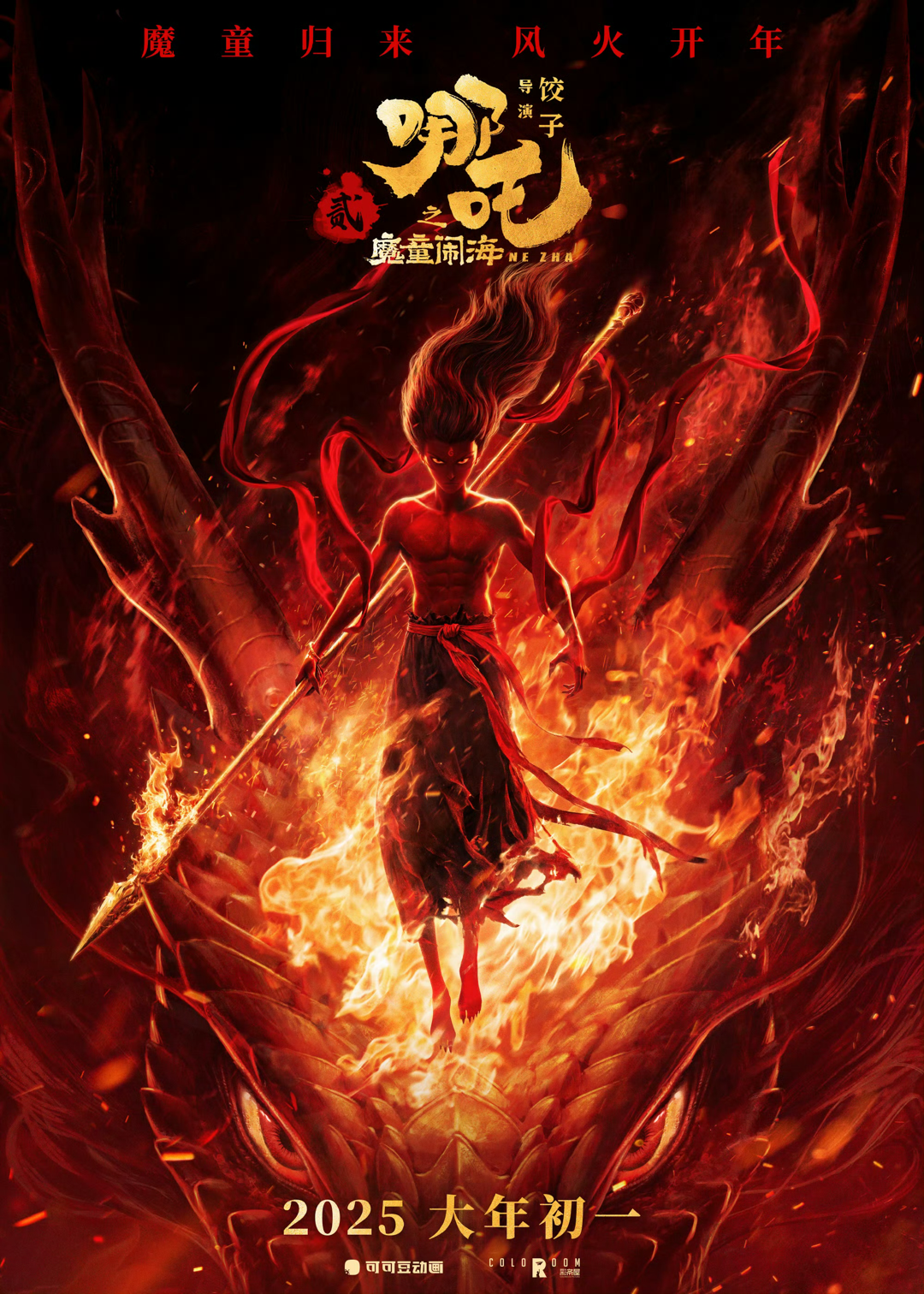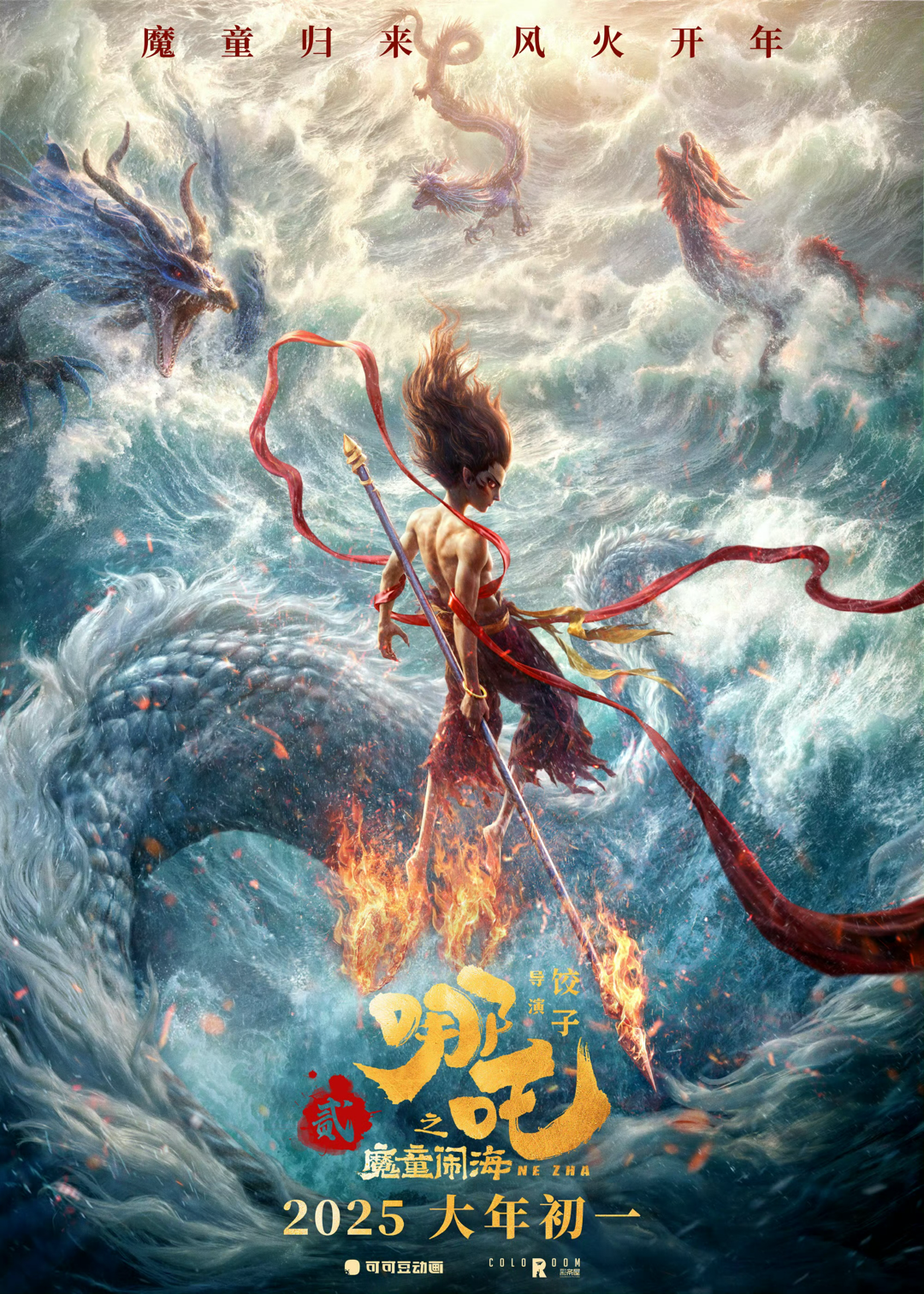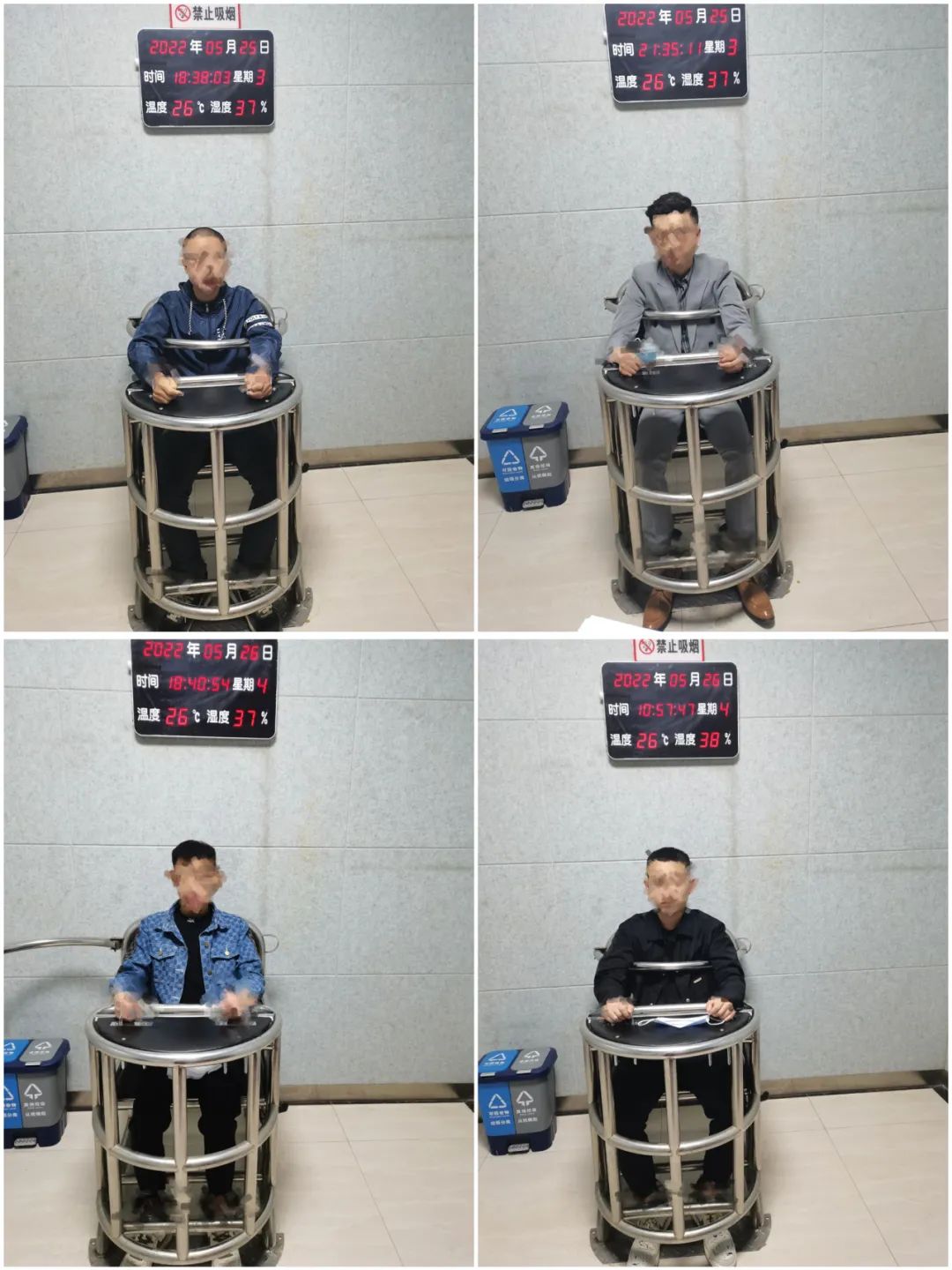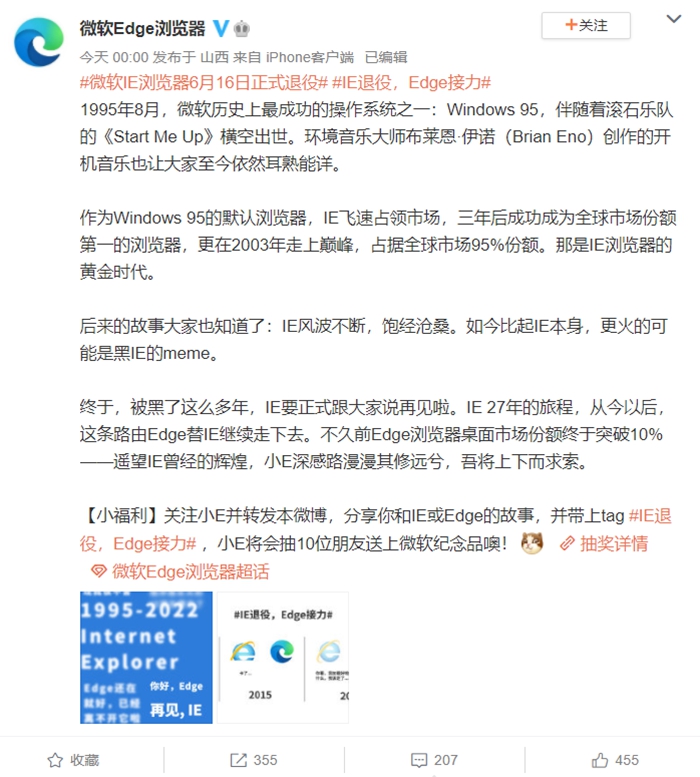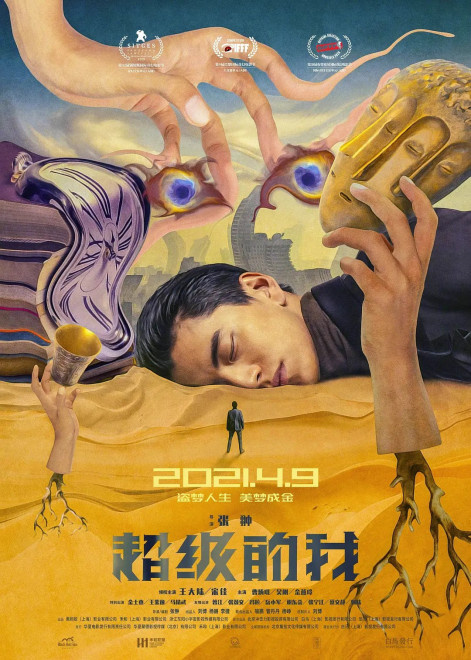Xinhua News Agency, Beijing, September 16th Title: Scabbers and misdeeds! The United States is the biggest destroyer of the international peace environment after World War II.
Xinhua news agency reporter
"If any country is seeking to dominate the world, intimidate other countries and flout the rules at the beginning of the 21st century, it is the United States." The New York Times wrote in a column last October.
Since the founding of the People’s Republic of China in 1776, the United States has started continuous expansion: the westward movement, the American-Mexican war, and the Spanish-American war … … Relying on money, blackmail and force, the territory of the United States has expanded more than 10 times from about 800,000 square kilometers at the beginning of the founding of the People’s Republic to about 9.37 million square kilometers now. After World War II, the United States became the superpower with the strongest comprehensive strength in the world. It still did not change its expansion gene and spared no effort to compete for and maintain hegemony in the world. Relying on its advantages in military, economic, scientific and cultural fields, the United States frequently interferes in other countries’ internal affairs, bullies, plunders and controls other countries under the banner of "freedom, democracy and human rights".
After World War II, successive American governments have pursued hegemonic policies: from the containment strategy of Truman administration to the realistic deterrence strategy of Nixon administration, and then to the "preemptive strike" strategy of George W. Bush administration, building and maintaining American hegemony are their core strategic goals; The fundamental purpose of recent American administrations, including the "smart power" strategy of the Obama administration, the "American priority" policy of the Trump administration and the "better reconstruction" of the United States proposed by the Biden administration, is still to ensure American hegemony.
In today’s world, the hegemony, hegemony and bullying of the United States are obvious to all: fanning the flames everywhere, instigating wars to create confrontation, overthrowing other countries’ political power by force, and plunging many places in the world into war and turmoil; Adhere to the "American exception", engage in double standards, ignore international laws and rules, and use international organizations, treaties and agreements if they are compatible, and abandon them if they are not, which seriously hinders international cooperation; Manipulating the international financial system, plundering huge wealth, conniving at greedy speculation and triggering a global financial crisis; Arbitrarily implement long-arm jurisdiction, frequently wave tariff sticks, provoke trade disputes everywhere, and attack opponents by any means; Manipulate international public opinion, forcibly export American values, and engage in cultural aggression against other countries … …
Countless facts tell the world that the United States is the real destroyer of international rules and world order and the source of the increasing instability and uncertainty in today’s world. American hegemonism and power politics undermine the global order, threaten human peace, bring serious consequences to the world, and become the biggest challenge threatening the progress and peaceful development of human society. Noam Chomsky, Robert Kagan and other famous American scholars have pointed out more than once that the United States has become a "rogue superpower".
The United States is the biggest source of chaos in the world.
"The history of the United States is full of war and expansion. While raising the international status of the United States, the war has profoundly changed the way of American behavior and the way of life of the people … … War is the American way of life. " Paul Atwood, an American historian and senior lecturer at the University of Massachusetts in Boston, wrote in his book War and Empire: American Lifestyle published in 2010.
Looking at American history, it is not difficult to find that "militancy" and "militancy" are written in American genes. The United States was born, grew and became a superpower in the war, slavery and slaughter. Its appearance on the international stage and the promotion of its influence are all related to major wars. Former US President Jimmy Carter mentioned in a speech in June 2019 that the United States has not fought for 16 years in its more than 240-year history since the founding of the People’s Republic of China, which is called "the most combative country in the history of the world". American National Interest magazine quoted Dakota Wood, a senior researcher of the American Heritage Foundation’s defense program, as saying that the United States is involved in a war every 15 years on average.
This bellicose tradition did not disappear after the United States became a superpower. More and more people see that no country in the world today is so keen on overseas intervention and has launched or participated in foreign wars so frequently as the United States.
Military power is an important pillar of American global hegemony. In order to maintain its hegemonic position, the United States often openly violates the purposes of the Charter of the United Nations and the norms of international law, and relies on its superior military strength to directly wage wars, create separatist conflicts and bring turmoil to the world. Since the end of World War II, the United States has launched or participated in many wars overseas, such as the Korean War, the Vietnam War, the Kosovo War, the Afghan War, and the Iraq War, which not only claimed a large number of soldiers’ lives, but also caused extremely serious civilian casualties and property losses, resulting in huge humanitarian disasters.
The most typical is the Iraq war. In 2003, despite the general opposition of the international community, the United States launched the Iraq war on trumped-up charges. According to the statistics of Watson Institute of International and Public Affairs, at least 180,000 to 200,000 Iraqi civilians died in this war. The United States-led Coalition forces also used a large number of depleted uranium bombs and white phosphorus bombs in Iraq, which seriously endangered the local ecological environment and people’s health. According to official Iraqi statistics, before the Gulf War in 1991, the incidence of cancer in Iraq was 40 per 100,000 people on average, but in 2005, this proportion soared to at least 1,600 per 100,000 people on average.
The report released by the American anti-war organization "Code Pink" in March this year shows that in the past 20 years, the United States and its allies have frequently bombed other countries, dropping more than 40 bombs and missiles every day on average. In late February this year, shortly after the Biden administration took office, the US military launched an air strike against eastern Syria. Many parties strongly condemn the United States for violating international law and Syrian sovereignty.
Behind the U.S. military’s indiscriminate bombing overseas is the continued high military expenditure of the United States. According to the report on the trend of global military expenditure in 2020 released by Stockholm International Peace Research Institute in Sweden in April this year, as the country with the largest military expenditure in the world, the US military expenditure in 2020 increased by 4.4% over the previous year, which was the third consecutive year of growth, with a total amount of 778 billion US dollars. The United States accounted for 39% of the total global military expenditure, up from 38% in the previous year. According to the budget plan for fiscal year 2022 submitted by Biden administration to Congress, the total defense budget is 753 billion US dollars, an increase of 1.7% compared with 2021.
However, the frequent overseas military operations and huge military expenditures of the United States only benefit a few American politicians and arms giants, but harm the interests of the vast majority of Americans and pose a serious threat to world peace and stability.
Stephen Walter, a professor of international relations at Harvard University, wrote on the website of Foreign Policy magazine that the United States has released militarism, xenophobia, pseudo-patriotism and incitement in "endless wars" abroad, all of which run counter to the civic morality on which a sound democratic system depends.
The Center for American Progress Studies published an article in May this year, pointing out that the defense budget of the United States today is more than that at the peak of the Cold War, exceeding the sum of the defense budgets of the next 10 countries, accounting for more than half of the discretionary budget of the entire federal government, but "no matter how much military spending the US government spends, it can’t buy perfect national security." The article holds that the US government should spend more money on improving the US infrastructure and responding to the COVID-19 epidemic, rather than on new nuclear weapons, aircraft carriers and fighter planes that undermine world stability.
Erica Finn, head of the Washington-based anti-war organization "Winning without a Fight", bluntly said that major global threats, including the COVID-19 epidemic, climate change and economic inequality, have never had a military solution. The U.S. government cuts public goods investment and continues to provide resources to arms dealers without restraint, which will only harm the security of the country and the world in the end.
Always double standard, "American anti-terrorism" creates "safe black hole"
This year marks the 20th anniversary of the United States sending troops to Afghanistan under the banner of anti-terrorism. The war in Afghanistan, which lasted for nearly 20 years, surpassed the Vietnam War to become the longest war in American history, which not only plunged the United States and its allies into the "imperial cemetery", but also brought profound disasters to the Afghan people, resulting in tens of thousands of civilian deaths and tens of millions of people being displaced or becoming refugees.
In the end, the United States withdrew its troops in a hurry to get out of the quagmire of war. In April this year, US President Biden announced that the US troops stationed in Afghanistan would be completely withdrawn before September 11th, and then advanced the end time of withdrawal to August 31st. With the accelerated withdrawal of the United States and NATO, the Taliban in Afghanistan quickly launched an offensive and constantly captured major towns. On August 15th, Mohamed Nayim, spokesman of the Taliban political office in Doha, Qatar, announced that Taliban militants had entered and controlled Kabul, the capital of Afghanistan, and that "the war in Afghanistan has ended". On August 16, Biden admitted that the situation in Afghanistan deteriorated faster than the US expected, but he laid more responsibility on the Afghan government and the previous US government, and insisted that withdrawing troops from Afghanistan was the right decision in the interest of the US. Today, 20 years after the "9.11" incident and the US spending 2 trillion US dollars in Afghanistan, the United States has ushered in a gloomy moment of "the fall of Kabul".
Former Afghan President Hamid Karzai criticized that the United States came to Afghanistan claiming to fight extremism and bring stability to this war-torn country, but it failed in both aspects.
In fact, behind the wars, chaos and turmoil in many parts of the world, there are almost all American figures. After the "9.11" incident in 2001, anti-terrorism became the focus of American national security and foreign policy. Since then, the United States has guided the war on terrorism with the Cold War mentality, and has promoted "American-style anti-terrorism" around the world in the name of "national security" and "defending freedom" according to double standards, divided different camps through "anti-terrorism", forced regime change in other countries, and used "anti-terrorism" as a tool to eliminate dissidents.
The U.S. military targeted Soleimani, commander of the Iranian Islamic Revolutionary Guard Corps "quds force" with drones, connived at Israeli air strikes against Syrian and Lebanese countries, and seriously violated the sovereignty of the countries concerned … … The anti-terrorism action led by the United States has become a tool to maintain hegemony and promote American democracy and values. As a result, a large number of civilians have become victims, the refugee problem has worsened, the regional situation has been turbulent, and security threats have spilled over. Along with these so-called "anti-terrorism" actions, there is also the gross violation of human rights and freedoms in other countries by the United States, as evidenced by the scandals of prisoner abuse by the US military in Afghanistan and Iraq that shocked the world.
According to the statistics of the Smithsonian Institution, since 2001, the wars and military actions launched by the United States in the name of "anti-terrorism" have fully covered "about 40% countries on this planet". According to the data of Brown University’s "War Cost" project, these so-called "anti-terrorism" wars have claimed more than 800,000 lives, displaced more than 38 million people and cost more than 8 trillion US dollars.
However, no matter how many innocent lives are in the eyes of the United States, they are just a string of cold numbers. The United States is used to playing with double standards on the issue of counter-terrorism, which is entirely for the needs of American domestic politics and foreign policy. The United States often reacts violently and resolutely attacks terrorist attacks against itself and its allies; American officials and public opinion are often indifferent to such incidents in other countries.
"east turkestan islamic movement" ("East Iraqi Movement") has been engaged in anti-China separatist and extreme violence activities both inside and outside China for a long time, causing huge casualties and property losses to the people of China, and was listed on the sanctions list of the 1267 Committee of the United Nations Security Council. At that time, the United States was also a co-sponsor of the listing of "East Iraqi Movement". In recent years, the "East Iraqi Movement" has been wandering in Afghanistan and Syria, planning and implementing a series of violent terrorist activities, including the car bomb attack on the Embassy of China in Kyrgyzstan in 2016. In November 2020, however, the United States publicly announced that it would revoke the definition of the terrorist organization of the "East Iraqi Movement", claiming that there was no reliable evidence that the "East Iraqi Movement" continued to exist for more than a decade. The United States "lies with its eyes open", unilaterally denies the nature of the "East Iraqi Movement" as a terrorist organization, and turns terrorism into a tool to contain other countries. The sinister intention of "containing China with fear" is obvious.
Justice is in people’s hearts. In February of this year, the video "Question of Muslims in China" filmed by the Englishman Ruben Lawrence attracted attention. In the video, the little British brother appeals to everyone not to forget the fact that China has been fighting the terrorist organization "East Iraqi Movement", pointing out that the United States has reneged on this issue, treated others with double standards and has impure motives, urging the United States and its Western allies to stop smearing China, and calling Biden not to take the opportunity to interfere in China’s internal affairs.
In addition, the United States also cultivated a large number of anti-government armed forces around the world, many of which later became terrorist organizations and manufacturers of international terrorist activities. American-style "double-standard anti-terrorism" harms others and yourself, causing endless harm.
For example, after the Cuban Revolution, the United States sheltered many armed groups opposed to the Cuban government and even acquiesced in setting up training camps in southern Florida. In October 1976, a Cuban airliner exploded over Barbados, killing all 73 people on board. Luis Posada, who was originally from Cuba and was exiled to the United States, was suspected of causing the air crash and was wanted by Cuba, but the United States government never agreed to extradite him to Cuba. In January this year, the State Council listed Cuba as a "state supporting terrorism" again. Cuban Foreign Minister Rodriguez criticized the US move as "hypocritical and cynical political opportunism".
The United States strongly supported the anti-government guerrillas in Nicaragua in the 1980s. Stansfield turner, former director of the US Central Intelligence Agency, once testified in Congress: "I think that many actions of guerrillas are of a terrorist nature and are terrorist actions supported by the United States. This is indisputable."
More ironically, the United States sent troops to Afghanistan in the name of anti-terrorism in 2001, but in fact the initiator of the terrorist cancer was the United States itself. During the Cold War, the United States used Afghanistan as a pawn against the Soviet Union, and provided a large amount of weapons and money to extremist organizations including bin Laden’s forces, encouraging them to fight against the Soviet Union. After the Soviet Union withdrew its troops from Afghanistan, the United States immediately abandoned these "friends" who were considered useless, making Afghanistan a shelter for international terrorism and extremism.
Medea Benjamin, co-founder of Code Pink, and Nicholas Davis, a researcher of the organization, wrote that if Biden’s administration continues to pile up more lies and atrocities on the basis of previous administrations, "it will not be able to regain the respect of the world for American leadership, nor will it be able to win the support of the American public for its foreign policy".
Intervention addiction, the United States is the dirtiest black hand of the "color revolution"
"Instead of letting others dominate, it is better to do it yourself." This is the American Columbia University historian Stephen Wertheim’s evaluation of the pursuit of hegemony by the United States at any cost. In order to maintain and consolidate its hegemonic position, the United States has resorted to unscrupulous means, from plotting "peaceful evolution" to inciting "color revolution" and even directly subverting other countries’ political power.
In July this year, anti-government demonstrations broke out in parts of Cuba. According to the evidence released by the Cuban government, since mid-June, some anti-Cuban forces in the United States, funded by the American government, have deliberately spread the lie of "the collapse of Cuba’s medical system under the COVID-19 epidemic" through social networks, and used this as an excuse to incite military intervention in Cuba, with the aim of subverting the Cuban regime. The US government subsequently sanctioned Cuban military officials and entities on the grounds that the Cuban government "suppressed" the demonstrators.
Cuba’s Granma newspaper also revealed this year that in the past 20 years, the United States Agency for International Development and the National Foundation for Democracy have allocated nearly $250 million for a series of incitement and subversion plans against Cuba. Francesca Lopez Cibeira, a historian at Havana University, Cuba, said that in recent years, the US government has often used "human rights" and "freedom" as a pretext to put pressure on other countries and incite conflicts, with the aim of promoting regime change in countries that are in contradiction with it and safeguarding the hegemonic position of the United States itself.
The international community clearly remembers that during the series of high-level meetings on the 75th anniversary of the founding of the United Nations in 2020, Cuban Foreign Minister Rodriguez tore off the fig leaf of the United States in front of the whole world, denouncing the crime of the United States interfering in other countries’ internal affairs and pursuing hegemonism, and even bluntly saying that "the United States is the greatest threat to international peace and security".
The United States is an "addict" who interferes in other countries’ internal affairs and a dirty "black hand" who incites civil strife in other countries. In his book Democracy: America’s Deadest Export, American writer William Bloom made the following statistics on American foreign interference since the end of World War II: trying to overthrow more than 50 foreign governments, most of which were elected; Rough interference in democratic elections in at least 30 countries; Attempted to assassinate more than 50 foreign leaders.
The ultimate goal of subverting the current regime and supporting political parties with weak foundations and relying heavily on the United States and the West to come to power is to serve American interests.
The "black hand" of the United States has opened Pandora’s Box, leaving behind a mess of "color revolution", and the "Arab Spring" has become the "Arab Winter". Many countries in Central and Eastern Europe, Central Asia, West Asia and North Africa have been in political turmoil, social conflicts have intensified, and people have been dragged into the abyss of disaster. Take Kyrgyzstan as an example. According to the public information of USAID, the agency will invest more than US$ 25 million in Kyrgyzstan alone in 2020, and the projects involved include seemingly grandiose names such as "democratic governance", "safe immigration" and "supporting legal fairness". Kyrgyzstan has experienced several abnormal power changes over the years.
Behind a series of "color revolutions" directed by the United States, a self-proclaimed "unofficial, non-profit" organization has a high appearance rate. This is the National Foundation for Democracy, which is called "the biggest financier of the global color revolution". This organization, established in 1983, has close ties with the State Council, USAID, CIA, etc. It is known as the "white glove of the CIA" and engages in subversive activities, providing more than 1,600 grants every year to support NGO projects in more than 90 countries. The Foundation is also the financier behind some separatist forces against China. It supports dozens of China-related projects every year, and has provided about 100 million US dollars to more than 100 anti-China groups, including the Tibetan Youth League and the World Peace Council, which were clearly designated as terrorist organizations by China. Many funds for the activities of "Hong Kong independence" also come from this foundation. Former US Congressman Ron Paul publicly criticized more than once that the National Foundation for Democracy "has almost nothing to do with democracy", "this is an organization that subverts democracy at the expense of American taxpayers" and "engages in ‘Color revolution ’ Instead of really promoting the democratic movement. "
Nowadays, the ruling parties and people in more and more countries have realized that the "color revolution" is enough to destroy the evil essence of a country and a nation. History has repeatedly proved that when the "color revolution" approaches, peace and tranquility will go far, development and prosperity will be hindered, and ultimately innocent people will suffer.
Bloodthirsty, dollar hegemony shears wool all over the world
"Capital comes into the world, from head to toe, every pore is dripping with blood and dirty things." In Das Kapital, Marx described primitive accumulation of capital as a process full of conquest, slavery, plunder and killing. It is equally appropriate to use this sentence to summarize the history of the United States.
After World War II, the United States used dollar hegemony to make the creation and flow of wealth all over the world serve American interests, thus constantly "shearing wool" on a global scale.
The United States uses dollar hegemony to push up the financial risks of developing countries and plunder their wealth, including resources and real estate, or gain monopoly rights of public services such as water, electricity and transportation in these countries in order to reap huge profits. In the Latin American countries that implemented the Washington Consensus, the average economic growth rate in the 1990s was reduced by half compared with that in the 1980s. John perkins, an American economist, disclosed in the book Confessions of an Economic Killer published in 2004 that American "economic killers" wore legal cloaks such as economists, bankers and international financial consultants, manipulated other countries by economic means, lured developing countries into preset economic traps, controlled their economic lifelines and natural resources, and allowed funds to flow into the United States continuously, consolidating and expanding American economic, political and military hegemony in the world.
This phenomenon has existed for a long time in the field of international trade: the United States printed US dollars, and countries around the world replaced resources and commodities with US dollars in global trade, and then purchased US treasury bonds and corporate securities as their foreign exchange reserves, so that US dollars returned to the United States and supported the US economy. American historian Nial Ferguson called this phenomenon "the biggest free lunch in modern economic history". According to the latest data of the Federal Reserve, it costs only 6.2 cents to print a dollar bill, but it can get the purchasing power of a dollar, and the cost of printing a bill with a face value of 100 dollars is only 14 cents. From this point of view, printing US dollars is undoubtedly a big business that will not lose money in any way. This is exactly what former US Secretary of State Henry Kissinger said in the 1970s — — "Whoever controls food will control mankind; Whoever controls the energy will control the whole continent; Whoever controls the currency will control the world. "
Although the US fiscal deficit and government debt are constantly expanding, due to the hegemonic position of the US dollar, US debt can still enjoy low interest rates, so that the United States can obtain funds from the world at a very low cost. The borderless market published by McKinsey & Company in 1996 wrote: "All debts of the United States are denominated in US dollars, and the US dollar itself is the world reserve currency, which can create inflation at any time and make the United States get rid of debts at any time."
Relying on the hegemony of the dollar, the United States has enjoyed the super privilege of printing money almost unrestricted for many years. According to its own economic cycle, the United States has repeatedly switched between "opening the floodgates to release water" and "closing the floodgates to cut off the flow", plundering foreign exchange reserves of various countries, plundering high-quality assets and grabbing huge profits in the process of big inflow and outflow of dollars.
After the financial crisis in 2008, the Federal Reserve issued three rounds of quantitative easing policy from the end of 2008 to October 2014, and passed the crisis on to the world through the dollar overshoot.
Since the outbreak of the COVID-19 epidemic, in order to save the American economy and stock market, the Federal Reserve once again started the "super-water release" mode, offering zero interest rate plus unlimited quantitative easing. After Biden’s administration took office, it quickly launched a $1.9 trillion economic stimulus plan, and the "printing press" was at full capacity. A large amount of additional dollars flowed to all parts of the world, causing a sharp rise in commodity prices, and the economies of other countries, especially developing countries, suffered a double blow and were even more vulnerable. But these do not seem to be of concern to the United States. As former US Treasury Secretary John Connery said, "The dollar is our currency, but it is your problem."
Chongyang Financial Research Institute of Renmin University of China, Taihe Think Tank and Haiguo Tuzhi Research Institute jointly released "America First" on August 9 this year? ! The research report "The Truth of American Anti-epidemic" points out that it took the United States a year and a half to print nearly half of all US dollars for more than 200 years, and all countries in the world had to "carry the pot" and bear the inflationary pressure, turbulent pressure and "bubble" pressure that should not have been borne. When the American government failed to prevent and control the epidemic, the Federal Reserve issued money indiscriminately to delay the crisis by "flooding". If ranked by currency circulation, the United States is a well-deserved "first currency spammer".
What is more noteworthy is that every time the Federal Reserve rescues the market in crisis, it is not ordinary Americans who benefit, but the top 1% of the American rich, and almost all the wool cut around the world flows into their pockets. Most of these 1% people belong to some of the most powerful and well-funded interest groups, including Internet giants, Wall Street, medical insurance industry, pharmaceutical companies, fossil fuel industry, military-industrial complex and so on. The financial industry and high-tech industries in the United States expanded rapidly during the epidemic, and large American enterprises received huge subsidies through various economic stimulus plans. At the same time, most of the excess dollars flowed into the American stock market, and the rise in stock prices further increased the wealth of the rich Americans. According to the statistics of Forbes.com in January this year, although tens of millions of Americans lost their jobs and incomes during the COVID-19 epidemic, the total wealth of more than 650 billionaires in the United States increased by $1.3 trillion, an increase of 38.6%, while the total wealth of the five richest Americans increased from $358 billion to $661 billion, an increase of 85%. In the newly published book The Truth about America, joseph stiglitz, the winner of the Nobel Prize in Economics, tells the truth: the economy and politics of the United States exist only for this 1% people and are also manipulated by this 1% people.
The crazy printing of money has given birth to the illusion of temporary prosperity in the United States, but there are dangers behind it. At present, the size of the Fed’s balance sheet has exceeded $8 trillion, and the size of US Treasury bonds is as high as $28.5 trillion. Fitch Ratings, an international rating agency, downgraded the outlook of US sovereign credit rating to "negative" in July 2020, and said that high debt and deficit are eroding US sovereign credit. In an article published on May 31st this year, the Nihon Keizai Shimbun pointed out that Biden Economics, which combines huge fiscal stimulus measures and bold monetary easing policies, is stirring the world. "Like it or not, the world will be involved in this experiment in the United States. If this gamble ends in failure, it is not the United States that is hit hard, but a more fragile country. "
The United States will eventually threaten the dominance of the dollar by issuing currency to let other countries "pay the bill" for the US deficit. In recent years, in order to get rid of the hegemony of the dollar, Russia, the European Union and China have accelerated their efforts to de-dollarize. In fact, Soros, the "financial giant", admitted frankly in 2018 that in the next few years, the US dollar will lose its position as the world’s major reserve currency and trading medium. "People don’t like Washington’s power, so they are leaving and looking for ways to get rid of the US dollar."
Long arm jurisdiction, the United States bullies absolute monarch.
"For more than a decade, under the guise of anti-corruption, the United States has successfully disintegrated many large multinational companies in Europe … … The US Department of Justice prosecuted the executives of these multinational companies and even sent them to prison to force them to plead guilty, thus forcing their companies to pay huge fines to the United States. " Frederic Pieruzzi, a former executive of Alstom, broke the hegemonic behavior of the United States in his book The American Trap published in 2019.
Over the years, in order to maintain its hegemony in the political and economic fields, the United States has frequently put domestic laws above international laws and rules, abused long-arm jurisdiction, economic sanctions and other means to contain hostile and rival countries and foreign enterprises, and pushed the "law of the jungle" and hegemonism to the extreme, which has caused great harm to the world. The United States not only tries its best to suppress the countries it identifies as threatening American interests, but also regards the entities it identifies as threatening American commercial interests and technological or financial advantages as eyesores and does not hesitate to use all means to suppress them.
Since the introduction of the Foreign Corrupt Practices Act in 1977, especially after the amendment of the Act in 1998, the United States has used law enforcement as an excuse to extend its "black hand" overseas, and it has become longer and longer. Whenever and wherever, as long as foreign companies have traded in US dollars, signed contracts in US dollars, or only sent, received and stored emails through email servers located in the United States, the US government considers itself to have jurisdiction over relevant cases. Philippe Bonnecarrere, a member of the French Senate, pointed out that American long-arm jurisdiction exists from Asia to Europe. With the deepening of economic globalization and financial globalization, economic and financial sanctions have become a common tool for the United States to pursue hegemonic foreign policy.
In recent years, the United States has put more domestic laws above international laws and rules, and has become addicted to bullying sanctions, such as enacting the Law on Countering American Enemies with Sanctions and expanding sanctions against Russia, North Korea and Iran. Initiate the third article of the Helms-Burton Act and step up the blockade against Cuba. The United States not only imposes sanctions on countries that it regards as enemies or rivals, but also imposes "secondary sanctions" on third parties that have dealings with these countries, including American allies.
The United States continues to expand the extraterritorial application of domestic laws, ignoring the jurisdictional rules of international law and forcibly placing foreign individuals and entities under its own jurisdiction. According to these laws, the United States can obtain the user data and transfer information of European banks through the SWIFT system. Ali Laidi, a researcher at the French Institute of International Relations and Strategy, pointed out that in recent years, European enterprises have been constantly hit by the US Department of Justice and relevant financial regulators, and some enterprises accused of "corruption" or violating the US ban on trading with Cuba, Libya, North Korea, Iran and other countries have been fined hundreds of millions or even billions of dollars.
These actions by the United States have caused serious economic difficulties and even a humanitarian crisis, which is no less destructive than war. Since the outbreak of the COVID-19 epidemic, Venezuela, Syria and Iran have suffered from long-term sanctions from the United States, and their domestic economic and medical conditions are poor, and the epidemic situation is grim. Instead of stopping sanctions, the United States has further increased its sanctions, making these countries worse. Former Iranian President Rouhani complained: "The U.S. sanctions against Iran are inhuman and criminal and terrorist acts." An article on the website of Spanish Uprising newspaper pointed out that the United States is increasingly relying on illegal economic sanctions to replace or as part of the war in order to attack the economy and society of the countries concerned. The article calls for: "It is time to end the economic war in the United States and abolish these unilateral coercive measures that violate international law."
The international community is increasingly aware that the principles of market competition and international economic and trade rules advertised by the United States will only be observed by the United States when it is beneficial to the United States. American politicians talk about fair competition and free trade, believe in "American priority" in their hearts and wave "sanctions sticks" in their hands.
During Trump’s administration, in order to undermine China’s security and stability and further curb China’s development, the United States formally refused to recognize China’s market economy status in its documents submitted to the World Trade Organization, deliberately provoked trade disputes with China, and imposed a series of unilateral sanctions on China’s high-tech enterprises. After the Biden administration took office, it continued its policy of containing China, continued to abuse state power, issued a series of bills and administrative orders, and suppressed and restricted China enterprises such as Huawei by any means. As of April this year, the United States has listed 382 China companies and institutions in the "entity list", published the "military end-user list" including 73 China enterprises, and promulgated the so-called "Foreign Company Accountability Act" with provisions that obviously discriminate against China enterprises.
In the face of interests, the United States is not soft on its allies. After World War II, the United States also ruthlessly suppressed Japan, whose economy rose rapidly, as evidenced by the Plaza Agreement. In recent years, the United States has determined that the "Beixi-2" natural gas pipeline project connecting Russia and Germany has had an impact on the American natural gas industry and damaged the geopolitical interests of the United States in Europe and Asia, and imposed several rounds of sanctions on the project, which made the relationship between the United States and Germany very tense.
The United States has long placed itself on the opposite side of justice and morality by threatening, sanctioning and blackmailing other countries. As Ali Laidi said in the book "The Secret War" published in 2019, the United States can openly exert pressure on any country through the "legalization" of extraterritorial jurisdiction. No matter to allies or enemies, "absolute monarch, USA".
I am the only one, and the United States is the "destructive king" of the international order
Supported by strong strength, "American exceptionalism" has become the "theoretical basis" for its wanton trampling on international relations. Especially since the end of World War II, the United States has always regarded itself as the main defender of the "democratic capitalism" lifestyle and the international system based on "liberal values". The United States always asks other countries to abide by the "rules-based international order", but it is self-centered, putting self-interest above the international system with the United Nations as the core and above the international order based on international law.
Although the United States led the establishment of a set of international systems and rules on world politics and economy after the war, the attitude of the United States has always been to use them together, to abandon them if they disagree, and to "retreat from the group and break the contract" at every turn. Since the 1980s, the United States has refused to ratify or unilaterally withdraw from many international organizations or agreements, such as the United Nations Convention on the Law of the Sea, the United Nations Conference against Racism and the Kyoto Protocol. The Trump administration’s "withdrawing from the group and breaking the contract" is particularly serious. Within four years in power, it withdrew from more than ten international organizations or agreements, such as the United Nations Human Rights Council, the Comprehensive Iranian Nuclear Agreement and Intermediate-Range Nuclear Forces Treaty. The United States also opposes the negotiation of the verification protocol of the Biological Weapons Convention, which hinders the international community’s efforts to verify the biological activities of various countries and becomes a stumbling block to the biological arms control process.
The book "American Hegemony and International Organizations" published by Oxford University in the United Kingdom in 2003 summarizes: "The multilateral cooperation of the United States mainly depends on the extent to which these multilateral organizations are regarded as appropriate tools to promote the effective achievement of American goals." Robert Kagan, a senior researcher at the Brookings Institution in the United States, also pointed out in the book "The World Created by America" published in 2012: "Americans say that they want the international system to remain stable, but they are often the biggest obstacle to stability. They praised the advantages of international law and international system, and then they did not hesitate to violate and ignore them. "
On the one hand, the United States frequently withdraws from the "group" that is not what it wants, on the other hand, it severely punishes any "group" that dares to challenge the United States. In 2020, the Trump administration announced that it would impose economic sanctions and entry restrictions on officials of the International Criminal Court who participated in the investigation of the US actions in the Afghan war. This move is a step further than the refusal to recognize and implement the verdict of the International Court of Justice or to cooperate with the investigation of the International Court of Justice in American history. This incident once again shows that the United States would rather destroy the "public device" if it cannot be used for private purposes.
After Biden took office, although it returned to some international organizations or agreements, it was also to serve its strategic layout. The Biden administration still continues the practice of "withdrawing from the group and breaking the contract" for agreements that are considered harmful to the interests of the United States, such as the Open Skies Treaty. Despite repeated high-profile declarations that "the United States is back", the Biden administration has not given up "American priority" in essence, but promoted "selective multilateralism", which was called "American priority version 2.0" by European media.
In fact, as long as it does not meet the interests and intentions of the United States, the United States will never be soft-hearted whether it is an opponent or an ally. In recent years, the United States has been asking NATO and its Asian allies to increase military spending and increase the "protection fee" paid to the US troops. On the eve of Biden’s trip to Europe in June this year, the United States was exposed to monitor the politicians of European allies. This is another US surveillance scandal after the Prism Gate incident in 2013. This once again shows that the long-term implementation of large-scale network monitoring and cyber attacks in the United States has become the biggest threat to global network security and a veritable "matrix".
The epidemic in COVID-19 is like looking into a demon mirror, which makes the ugly state of "American priority" nowhere to hide. After the outbreak of the epidemic, the United States engaged in unilateralism, intercepted other countries’ anti-epidemic materials, banned the export of domestic medical materials, and bought out the drug production capacity that might be used to treat COVID-19 … … A series of selfish behaviors have stunned the world and caused serious damage to international cooperation against epidemic diseases. And the important hope for global anti-epidemic — — As for vaccines, the United States vigorously pursues "vaccine nationalism", and has been rushing to order and snap up vaccines since they are still in the clinical trial stage, pushing some underdeveloped countries and regions into a desperate situation of "no seedlings to grow".
The United States also carries "political bootleg" on the vaccine issue. For example, the article on the website of Spain’s Le Monde commented that the US government agreed to "lend" vaccines to Mexico in exchange for Mexico to strengthen its control over illegal immigrants on its border with Guatemala. The website of the American Foreign Policy magazine said: "The Biden administration is still pursuing American interests in a way that harms the interests of other countries in the world."
What is even more worrying is that the United States has secretly set up biological laboratories in many places around the world to carry out bio-militarization activities, and the doubt between Fort Detrick base and Covid-19 transmission has not been solved so far. The U.S. government not only kept silent about many of its own doubts, but also selectively ignored its own behavior of interfering with the global anti-epidemic. It also intensified its political manipulation on the issue of Covid-19 traceability by stigmatizing the epidemic and labeling the virus, in an attempt to kidnap the World Health Organization and implement the so-called "second-stage traceability plan" aimed at China, which aroused international concern and criticism.
Hume Field, an epidemiologist and science and policy adviser to China and Southeast Asia of the American Ecological Health Alliance, believes that the US actions "will only arouse suspicion and distrust, and fundamentally undermine the global joint efforts needed to fight against Covid-19 and overcome this epidemic".
Diao Daming, a researcher at the National Institute of Development and Strategy of Renmin University of China, pointed out that the politicization of virus traceability has greatly damaged the coordinating role of WHO at the critical moment when the world is once again hit by mutant Covid-19. The United States is trying to intimidate WHO and turn it into a politicized "hegemonic tool", which will lead to disorder and chaos in global anti-epidemic cooperation, dragging down not only the anti-epidemic work, but also the common destiny of all mankind.
Pushing on values, the small circle of American ideology divides the world
On August 11th, the White House announced that Biden would hold an online "Democracy Summit" from December 9th to 10th this year, and a summit opposite the offline one year later. Obviously, the United States wants to portray itself as the leader and main defender of global democracy. Ironically, a poll released by the Danish Foundation for Democratic Alliance shows that the United States is regarded as the biggest threat to democracy worldwide. Among the more than 50,000 respondents in 53 countries and regions, nearly half are worried that the United States will threaten their country’s democracy and hold a negative view on the global influence of the United States.
For a long time, the United States has regarded itself as a "city on the top of a mountain" and a "voter of God", advocating American values such as "democracy, freedom and human rights" as supreme so-called "universal values", judging other countries by American standards of right and wrong, and holding that the United States has the responsibility to promote its values all over the world. Thomas Paine, a British-American thinker, proclaimed in his pamphlet Common Sense published in 1776 that the United States "has the ability to create a new world". During World War II, Henry Luce, the founder of Time magazine, put forward the concept of "American century", saying that "American ideals will spread all over the world, raising people from the level of beasts to the level slightly lower than angels mentioned in hymns".
However, democracy is not Coca-Cola. The United States produces raw pulp, and the whole world has a taste. What the United States calls "universal value" is nothing more than "American value" which is decided by the United States according to American standards, and its essence is an ideological tool for the United States to safeguard global hegemony.
On the one hand, the United States takes advantage of its strong position in the field of culture and media to forcibly promote American democracy and values, export American political and economic model and engage in ideological infiltration on a global scale, especially in developing countries. On the other hand, under the guise of so-called "universal values", the United States attempts to occupy the commanding heights of morality and international public opinion, wantonly attack countries and entities that it regards as threats and opponents, and artificially create division and confrontation. Brzezinski, former national security assistant to the President of the United States, once said: "Strengthen American culture as the culture of all countries in the world ‘ Example ’ The status of the United States is a strategy that the United States must implement to maintain hegemony. "
American politicians have always attached great importance to ideological manipulation. In 1953, when allen dulles, then director of the US Central Intelligence Agency, advocated the "peaceful evolution" of socialist countries, he said: "Those who do not believe that spiritual pressure and propaganda pressure can produce results are simply ignorant." In 2010, the national propaganda system led by the U.S. government entered a stage of more coordinated operation, marked by the report of National Strategic Communication Framework submitted by then-U.S. President Barack Obama to the Senate and House of Representatives. In 2014, The Guardian revealed a secret project of USAID that attempted to overthrow the Cuban regime by using music: the United States recruited a large number of Cuban singers and musicians and pretended to carry out cultural activities, but the real purpose was to use these people to incite fans to oppose the Cuban communist party and the Cuban government. This confirms what Dulles once said: "As long as we confuse our brains, we can unconsciously change people’s values and force them to believe in a stolen value."
美国还把经济援助和政治制度挂钩,通过它主导的国际金融机构向非洲国家施压,逼迫这些国家采用西方政治模式。从20世纪80年代起,美国历任总统都把促进受援国“民主化”当做美国对外援助的首要目标。但这样的行为给受援国带来的往往是灾难。许多非洲国家因急剧的政治“民主化”和经济私有化诱发政治危机甚至大规模流血冲突,一些国家至今仍然政局动荡。赞比亚学者丹比萨·莫约批评说,美国及其西方盟友发展援助对解决非洲问题并非有益而是有害。
拜登政府上台后不断宣扬“回归多边主义”,但实际上却是以意识形态划界搞小圈子和集团政治,以意识形态站队、阵营之间选边来割裂世界,并美其名曰维护“基于规则的国际秩序”。“四边机制”“五眼联盟”“七国集团”等小圈子、小集团的规则本质上就是美国霸权规则,根本代表不了国际社会。例如,拜登政府纠集英国、加拿大等盟友多次在联合国人权理事会炒作新疆“强迫劳动”等所谓“中国人权问题”,然而这些国家自身不仅存在种族屠杀、文化灭绝等黑历史,而且直到今天仍存在严重的种族歧视问题。在联合国人权理事会第47届会议上,有90多个国家对中国表达支持,对反华小集团说“不”,反映了国际社会的正义呼声。
The article on the website of the American Foreign Affairs magazine pointed out: "From the popularity of the new crown to global trade rules, from climate change to economic development, the United States is actively obstructing the priorities of most democratic countries in the world. In this process, American foreign policy has intensified the global democratic crisis in the name of democracy, making American power lose its legitimacy. "
Bulgarian political scientist Ivan Krastev published an article on The New York Times’s website in May this year, saying that "liberal democratic countries" in the world have lost their monopoly position in defining democracy. As a recent study by Pew Research Center shows, most Americans are deeply disappointed with their own political system. Some people don’t even believe that they still live in a democratic country, and so do people in many other European countries.
Graham Ellison, a professor at Harvard University in the United States and a proponent of the concept of "Thucydides Trap", also wrote in Diplomatic magazine earlier: "The unipolar world has passed, and the illusion that other countries will only wait to be assigned positions in the US-led international order should also be shattered." (Note holder: Liu Si; Participating reporters: Wang Wen, Yang Liu, Liu Mingxia, Fu Yan)
